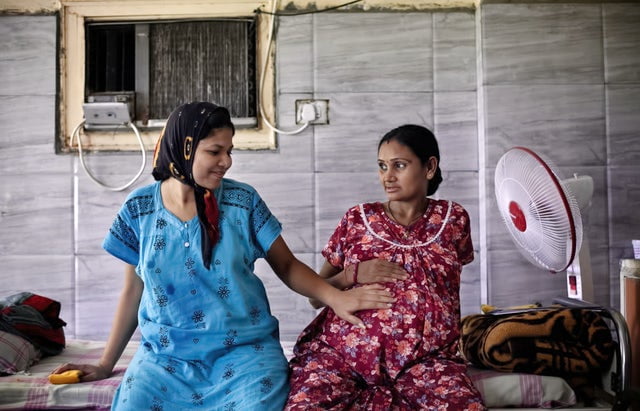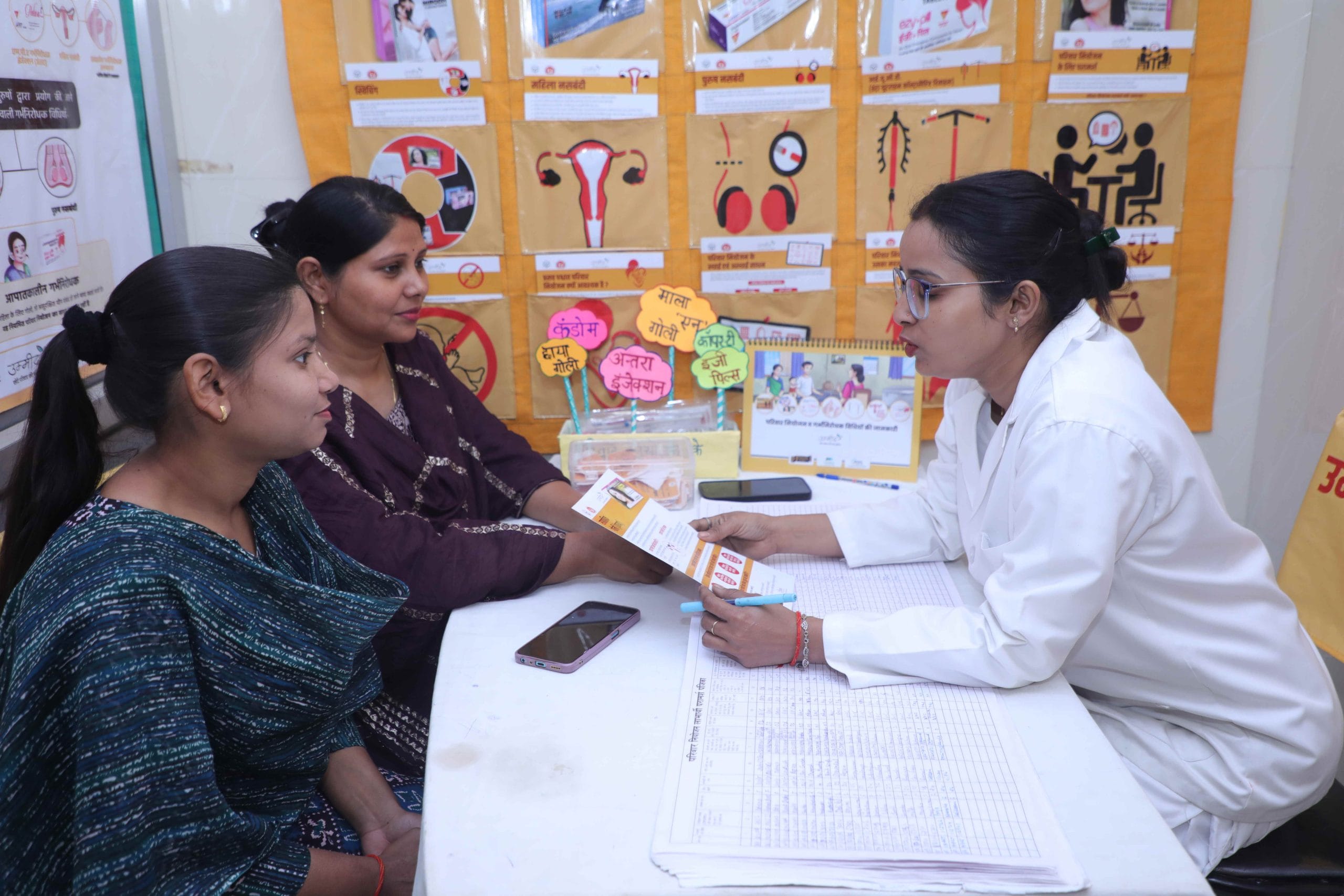A country’s maternal mortality rate is one of the most crucial indicators of how it prioritises it’s women. The most common causes behind a country’s maternal mortality rate are either socio-economic factors (such as poverty or inaccessibility of health care facilities) or health related complications (such as anemia or infection during labour). But what is worth noting is that 80% of these deaths are completely preventable, simply by making quality healthcare available, affordable and accessible to all expecting mothers.
Maternal mortality rate isn’t as much dependent on the mother’s lifestyle and diet as it is a reflection of a solid public policy by a committed government. A look at Bihar’s maternal healthcare figures presents a bleak, if not harrowing picture, raising apprehension about such a commitment on the part of lawmakers. In 2005, only about 20% of all childbirth occurred in an institutional facility. That figure had increased dramatically in 2015, when more than 60% of pregnant women chose to deliver their child in either a public or a private healthcare facility.
This was an outstanding victory, and the credit for this can be attributed to the Janani Suraksha Yojana (JSY), which was launched by the central government in 2005 for precisely the same reason: incentivisng institutional delivery in an attempt to reduce India’s Maternal Mortality Ratio (MMR) which at the time stood at 312 per 100,000 live births in Bihar. The JSY is a conditional cash transfer programme, targeted especially at BPL and SC/ST families.
The most common causes behind maternal death are either socio-economic factors (such as poverty or inaccessibility of health care facilities) or health related complications (such as anemia or infection during labour).
It recognised that the high cost of delivering in a hospital was a significant deterrent, and in rural areas provided a monetary compensation of Rs.1400 to the mother upon delivering in a public or private healthcare facility. The programme was further strengthened by the Janani Shishu Suraksha Yojana (JSSK), which provides free delivery, free blood, drugs and diagnostics, free transportation to and from the hospital, and free food services during delivery to pregnant mothers. The JSY and the JSSK can be considered the pillars of maternal healthcare policy under the NRHM in India.
However, it is 2019, and while five star hospitals with ‘maternity suites’ are on the rise in cosmopolitan cities like Delhi and Mumbai, utilization of antenatal care in most rural parts of India continues to be dreadfully low. According to a report by the UN, three-fourths of the health infrastructure in India is concentrated in urban areas where a little over a fourth of India’s population lives. An overwhelming majority of the rural poor rely solely on Primary Health Care (PHC) and Community Health Care (CHC) units, which are severely understaffed (50% of the posts for specialists is vacant, and 4,000 out of 5,000 community health centers do not have even a single obstetrician).
The deplorable state of public healthcare provision and maternal mortality rate leaves the people with no choice but to report their illnesses to private health care facilities. This decision in itself costs an Indian over 4 times of what it would have, at a public hospital. Consequently, hospitalization proves to be far beyond the means of most people in that; it can cost the poorest 20% of the country over 15 times their monthly income. It follows that antenatal care is no exception to this sort of monumental Out-Of-Pocket (OOP) expenditure.
Also read: Unravelling The Increasing Cases Of Hysterectomy In Beed District Of Maharashtra
Except that it’s worse. Because a normal course of pregnancy lasts for nine months. The WHO, and even the JSY guidelines recommend that a woman should make at least four ANC visits to a health facility, receive a Tetanus Toxoid (TT) injection and iron folic acid tablets/syrup for at least 100 days during the course of her pregnancy. This is known as ‘Full Antenatal Care’. But since the existing policy only incentivises institutional delivery and not receiving full antenatal care, expecting mothers are hesitant to spend a significant portion of their family’s income on check-ups. The reasons for this are manifold- if the health facility is five or ten kilometers away, they would have to bear a significant expense on transportation to and from the hospital.
Then there is the intersectionality of caste and religion, where women from marginalised groups may be denied accessing healthcare services when a policy or BPL card doesn’t apply. Lastly, there are also significant socio-cultural barriers, such as lack of awareness or trust in traditional cures over scientific medicine that diminish the importance of antenatal care. In the absence of a monetary incentive, the concept of visiting a healthcare facility just to ensure that all is good for the mother and child just doesn’t seem to exist.
Then there is the intersectionality of caste and religion, where women from marginalised groups may be denied accessing healthcare services when a policy or BPL card doesn’t apply.
A simple comparison of NFHS-3 and 4 data corroborates these postulations. For example, In 2005, only about 11% of all expecting mothers in rural Bihar had more than three ANC visits. In ten years, this figure had progressed only marginally to 14%. Further, the proportion of women in rural areas who visited a health facility more than three times during pregnancy in fact showed a negative trend in these 10 years, declining from 14.5% to 13%. The proportion of women receiving full ANC in the state also declined from 4.2% to 3.3% in the same ten year period. These are disturbing trends, and completely unaddressed by any central or state policy.
It is important to take note of these figures and incorporate them in our social policies. More than anything, it is an indicator that a complicated problem like maternal mortality doesn’t have just one single driving force behind it, and so the problem solution cannot be a strategy that is expected to work in silos. India still records the highest number of maternal deaths per year, performing poorly even amongst other developing countries, and yet our healthcare policies are not reviewed and upgraded as often as they should be. Out-of-pocket expenditure on health is the highest in Bihar, as the state spending on the same continues to be abysmally low. There is a dire need for political leadership at the state and the central level to take the health indicators in low performing states such as Bihar more seriously.
Also read: Is Childbirth The Only Prerequisite?: On The Maternity Benefit (Amendment) Bill 2016
Most importantly, we need to realise that unlike a death caused by disease or accident, a maternal death is a tragedy that occurs during a very natural life process– that of childbirth. The weight of this tragedy is borne entirely by women (especially poor and marginalised women) and unless we turn serious attention to it, they continue to be second class citizens. In all of India’s glory of being the ‘fastest growing economy of the world’, something as basic as quality healthcare has not yet trickled down to it’s women.
Mugdha is a Masters student at the National Law School, Bangalore, currently pursuing a degree in Public Policy. You can find her on Facebook.
Featured Image Source: News Deeply






Congratulations on the crisp, and hard hitting analysis
.A few observations : You have taken the figures from Bihar. What is the state in the rest of India?
It would have helped to see a few graphs.
Anyway, this article will remain on my mind for along time.